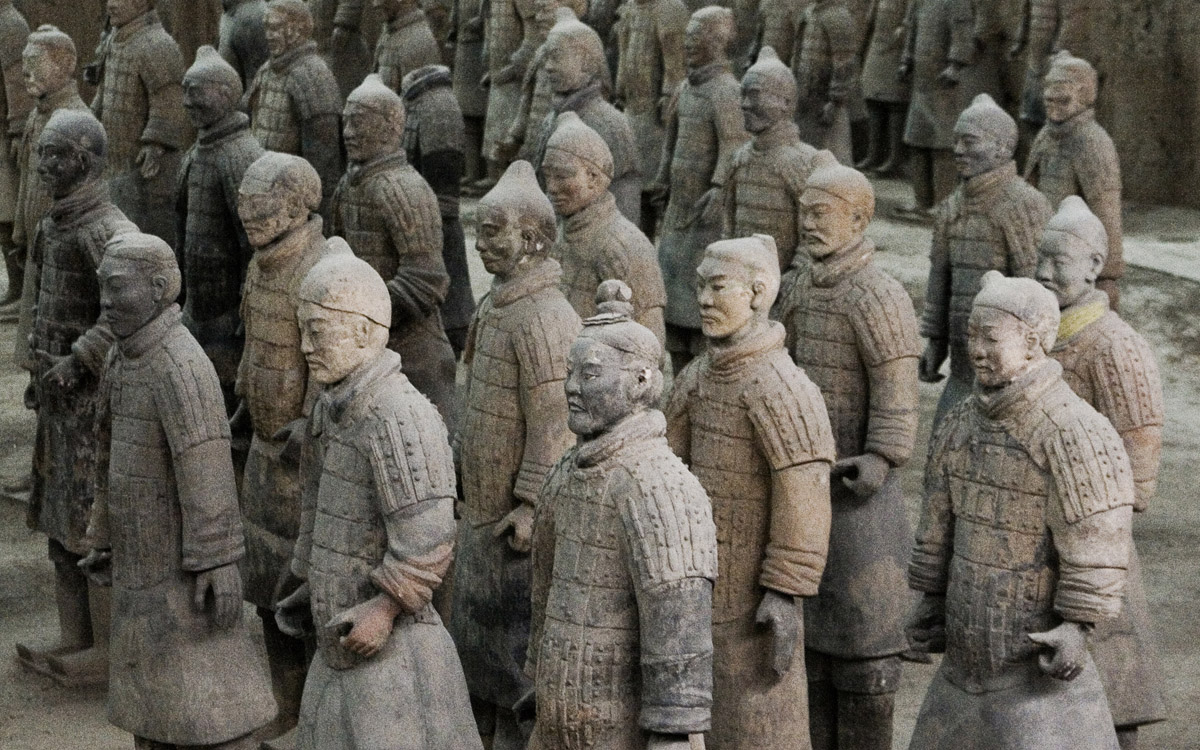
 he Terracotta Army (Chinese: 兵马俑; literally: "Soldier-and-horse funerary statues") is a collection of terracotta sculptures depicting the armies of Qin-Shi-Huang, the first Emperor of China. It is a form of funerary art buried with the emperor in 210–209 B.C.E and whose purpose was to protect the emperor in his afterlife.The Terracotta Army was discovered on 29 March 1974[3] to the east of Xi'an in Shaanxi province by farmers digging a water well approximately 1.6 km (0.99 mi) east of the Qin Emperor's tomb mound at Mount Li (Lishan),[4][5] a region riddled with underground springs and watercourses. For centuries, occasional reports mentioned pieces of terracotta figures and fragments of the Qin necropolis – roofing tiles, bricks and chunks of masonry.[6] This discovery prompted Chinese archaeologists to investigate, revealing the largest pottery figurine group ever found in China.
he Terracotta Army (Chinese: 兵马俑; literally: "Soldier-and-horse funerary statues") is a collection of terracotta sculptures depicting the armies of Qin-Shi-Huang, the first Emperor of China. It is a form of funerary art buried with the emperor in 210–209 B.C.E and whose purpose was to protect the emperor in his afterlife.The Terracotta Army was discovered on 29 March 1974[3] to the east of Xi'an in Shaanxi province by farmers digging a water well approximately 1.6 km (0.99 mi) east of the Qin Emperor's tomb mound at Mount Li (Lishan),[4][5] a region riddled with underground springs and watercourses. For centuries, occasional reports mentioned pieces of terracotta figures and fragments of the Qin necropolis – roofing tiles, bricks and chunks of masonry.[6] This discovery prompted Chinese archaeologists to investigate, revealing the largest pottery figurine group ever found in China.
















No comments:
Post a Comment